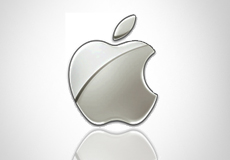By
Paula ParisiMarch 28, 2023
Canva, the web-based design platform, is debuting “Magic” AI-powered tools that can automate a variety of tasks, from logo design to video editing. The idea is to empower people without design training to do these things, and more. Infographics, advertising materials, illustrations and presentations are among the types of output Canva AI offers. The company is also adding brand management tools to its Visual Worksuite, including a Brand Hub that provides assets for creative application, with permission settings that can restrict off-brand use of things like color or fonts. Continue reading Canva Launches New Branding Features and Magic AI Tools
By
Paula ParisiJanuary 4, 2023
LED lighting firm Nanoleaf is debuting innovations at CES that include “learning smart light switches” under the banner Sense+ Controls. The devices span categories such as hardwired Smart Light Switch, Wireless Smart Light Switch and Nala Learning Bridge, all of which work with Matter, a global interoperability protocol designed to help smart homes run smoothly, running on the low-powered Thread mesh networking standard. The new Sense+ Controls products feature motion and ambient lighting sensors that automate routines. The Nala Learning Bridge facilitates color-differentiated, soft-glow night lights and connects via Thread to Wi-Fi or Ethernet. Continue reading CES: Nanoleaf Debuts New Matter-Compliant Smart Lighting
By
Debra KaufmanSeptember 26, 2019
Amazon created the Voice Interoperability Initiative to achieve software compatibility among digital voice assistants, encouraging its widespread adoption. Although 36 companies have joined the initiative, Apple and Google have not. Their absence is a significant impediment to the initiative’s goals, since Apple’s Siri and Google’s Assistant software are installed by default in most of today’s smartphones. Amazon’s Alexa, meanwhile, has no presence on smartphones, although its Echo speakers are a hit with consumers. Continue reading Amazon Forms Coalition for Voice Assistant Interoperability
By
Debra KaufmanAugust 31, 2018
Google is readying the release of its new, third version of Wear OS, which has been updated to be a speedy, inconspicuous platform rather than “Android on a smart watch.” It doesn’t feature any obvious improvements to battery life, but that’s an overall problem in the industry, not a Google shortcoming. According to Wear OS director of product Dennis Troper, users who are connected all the time will be able to be more present in the real world, similar to the goals of the company’s Digital Wellbeing initiative. Continue reading Google Redesigns its Wear OS, Streamlines the Smart Watch
By
Debra KaufmanSeptember 7, 2016
Lenovo, the world’s biggest PC manufacturer, is in discussions with Amazon about integrating Alexa into its computers and other devices. Also recently, LG decided to integrate Alexa support into its SmartThinQ Hub. These moves underscore Amazon chief executive Jeff Bezos’ goal to incorporate Alexa into a wide range of electronics, to spread the company’s influence to more consumers. Other tech companies attempting to do the same are Microsoft with Cortana, Apple with Siri and Google with Assistant. Continue reading Amazon and Lenovo Discuss the Integration of Alexa into PCs
By
Rob ScottOctober 24, 2014
Google’s Gmail team launched a new app called Inbox to help users manage their email. Inbox sorts your mail as an assistant might by categorizing incoming messages into Bundles. While this may not be a new concept, the Highlights feature is compelling. Highlights will pull the important information from a message and push it to the top (for example, flight times in a confirmation email from an airline). It even has the ability to update that information (think gate changes or delays). Continue reading New Google App “Inbox” Serves as Personal Gmail Assistant
By
Rob ScottMarch 4, 2014
Microsoft’s Windows Phone 8.1 update will include its new personal digital assistant “Cortana,” named after the AI character in the “Halo” game series. Designed to rival Apple’s Siri and Google Now, Cortana’s circular animated icon will replace the built-in Bing search functionality on Windows Phone, and will animate while speaking or thinking, creating a personality similar to the Siri approach. Cortana will save data in a Notebook system that will enable it to track data and generate notifications much like Google Now. Continue reading Cortana: Microsoft’s New Siri-Like Personal Digital Assistant
By
Valerie SavranSeptember 17, 2013
Microsoft is developing a personal assistant app called Cortana that will compete directly with Apple’s Siri and Google Now. Cortana derives its name from an artificially intelligent character in Microsoft’s “Halo” series. Essentially, the app will be able to learn and adapt while utilizing machine-learning technology and the Satori knowledge repository powering Bing. The app will likely be released somewhere between 2014 and 2016. Continue reading Cortana: Microsoft Developing Next-Gen Personal Assistant

